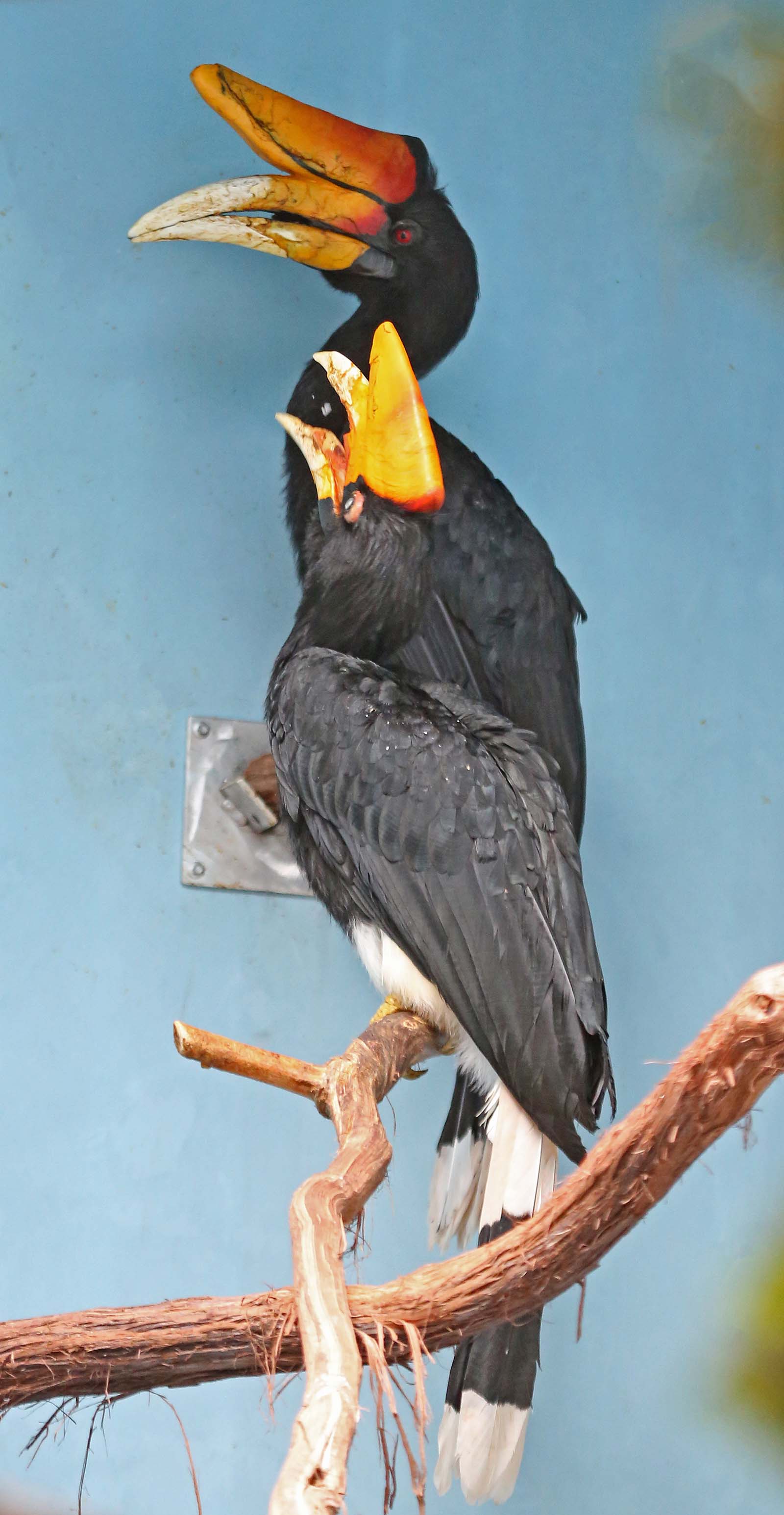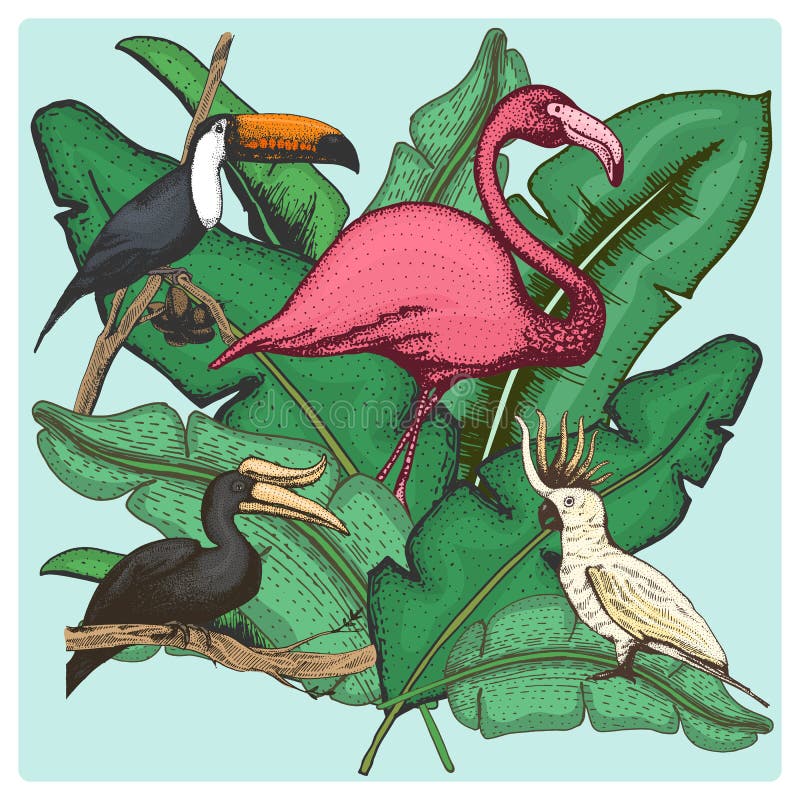

Then, helped by her mate, she seals herself in, covering the entrance with droppings and mud. The female hornbill lays her eggs in a hole in a tree. Hornbills generally form monogamous pairs, although some species engage in cooperative breeding. Often the first sign of an approaching hornbill is the rhythmic chuffing sound made by their wings as they fly through the air, which can be heard at long range. Southern ground hornbill booms are so loud they are sometimes mistaken for the roaring of lions. The largest assemblies of hornbills form at some roosting sites, where as many as 2400 individual birds may be found. Larger flocks sometimes form outside the breeding season. Hornbills are diurnal, generally travelling in pairs or small family groups. The casque of the helmeted hornbill from Borneo is different from all other hornbill species: its dense, ivory-like casque makes up about 10 percent of the bird’s body weight! Unfortunately, this has made it attractive to native islanders who kill the birds to use the heavy casques for ornamental This striking coloration is the result of the bird rubbing its beak and casque against the preen gland beneath the tail, which stimulates the production of an oily orange-red fluid that adds a Several species, including the striking Rhinoceros hornbill, possess a brightly coloured beak and casque. In some species it is barely perceptible and appears to serve no function beyond reinforcing the bill. The large bill assists in fighting, preening, constructing the nest, and catching prey.Ī feature unique to the hornbills is the casque, a hollow structure that runs along the upper mandible. The most distinctive feature of the hornbills is the heavy bill, supported by powerful neck muscles as well as by the fused vertebrae. Females and males often have different colored faces and eyes. This contrasts with the brightly colored neck, face, bill, and casque in many species. Hornbills have a long tail, broad wings, and white and black, brown, or gray feathers. The largest and most massive species appears to be the southern ground hornbill which has an average weight of 3.8 kg (8.3 lb), and can weigh up to 6.3 kg (14 lb) and span about 180 cm (6 feet) across the wings. The smallest species is the black dwarf hornbill, at 99 g (3.5 oz) and 32 cm (1 foot) in length. The rhinoceros hornbill is the national bird of Malaysia.Hornbills show considerable variation in size. Hornbills live in large trees in tropical rainforests in several countries in Southeast Asia, including Indonesia, Thailand, Sumatra, and Malaysia. Their large wingspans and long tail feathers allow them to gracefully fly from one branch to another.

Rhinoceros hornbills spend most of their time high up in the canopy of tropical forests. The female breaks herself out when the chicks are old enough, but the male and female seal the chicks back up again for several more months until the chicks are old and strong enough to break out of the nest on their own. Only a small slit is left open so that the male can pass food to the female (and later, the chicks) for four to five months. The female hornbills lays her eggs in a hollow tree cavity, and with help from the male, seals herself and her eggs inside with a paste made of fruit, mud and feces. Hornbills eat mostly fruits, but will occasionally eat insects and small animals. Both the beak and casque are orange and red in color. They have black feathers on their bodies and white feathers on their legs. Rhinoceros hornbills can weigh upwards of 6 pounds and measure almost 3 feet long. Alfred Huang North American Crane Exhibit.Virtual Father's Day Brunch with the Sloths.Support our Field Conservation Department.Louise Felton Zookeepers’ Memorial Fund.Jonathan Gilmour Memorial Scholarship Fund.Donate your Cell Phone to Help Gorillas.AZA SAFE: Saving Animals from Extinction.Wildlife Trafficking Alliance: Be Informed.Panama Amphibian Rescue and Conservation Project.Protecting Habitats with the Motus Wildlife Tracking System.New England Blazing Star and Native Pollinators.


 0 kommentar(er)
0 kommentar(er)
